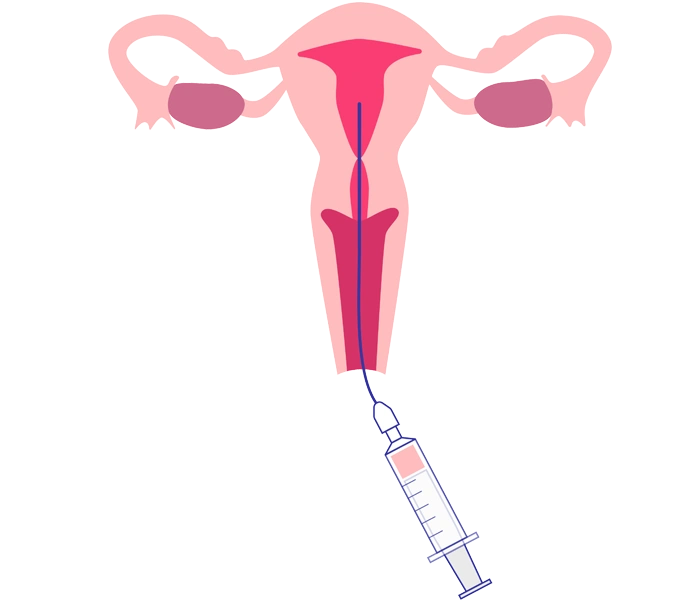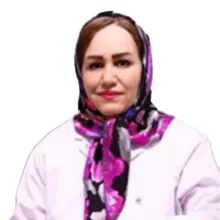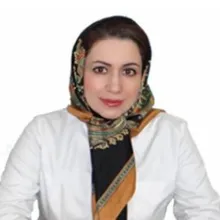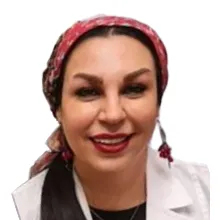Comprehensive Article on Frozen Embryo Transfer (Excluding Donor-Recipient Patients)
Introduction
Frozen Embryo Transfer (FET) is one of the most important infertility treatments that allows couples to use previously frozen embryos to achieve pregnancy. This treatment can be an effective and efficient option for women and men who, for various reasons, are unable to conceive naturally. FET is especially applicable for individuals who have undergone In Vitro Fertilization (IVF) and produced high-quality embryos. In this article, we will delve into the details of this method, its benefits, the treatment process, and the role of nutrition in enhancing the outcomes of this treatment.
What is Frozen Embryo Transfer (FET)?
Frozen Embryo Transfer (FET) refers to a process where embryos created in previous IVF cycles and frozen are thawed and transferred into the uterus after preparing it. This treatment involves embryos that have been naturally conceived, with no use of donor embryos in the process. It is a suitable method for individuals who are unable to conceive for various reasons.
One of the advantages of FET is that embryos can be stored in a freezer for long periods, and when the time is right and the mother’s uterus is prepared, they can be used for transfer. This treatment is especially beneficial for those who may not be able to conceive immediately due to medical or occupational conditions.
Benefits of Frozen Embryo Transfer Treatment
- Use of Stored Embryos: Often, additional embryos are created during IVF cycles, and they can be used in the future. This allows patients to use previously produced embryos without having to restart the IVF process.
- Increased Chances of Successful Pregnancy: Using high-quality frozen embryos significantly increases the chances of a successful pregnancy. Frozen embryos are carefully evaluated and of the highest quality.
- Cost Reduction: The treatment costs in FET can be lower compared to starting a new IVF cycle, as there is no need for ovarian stimulation and egg retrieval. This is particularly cost-effective for couples with multiple stored embryos.
- Flexibility in Timing: Frozen embryo transfer allows for the embryos to be transferred at the most suitable time, without the rush, and based on the mother’s health and condition. This method gives patients the opportunity to make better decisions regarding the timing of embryo transfer.
- Preservation of Embryo Health: If the freezing process is done correctly, the quality and health of the embryos are completely preserved, ensuring a high chance of success when they are transferred.
Frozen Embryo Transfer Treatment Process (FET)
The FET process involves several steps, which we will outline below:
- Initial Consultation and Health Evaluation: The first step in starting FET treatment is a medical consultation. During this stage, the fertility specialist assesses the patient’s overall health, medical history, and the condition of the uterus. Initial tests are performed to evaluate the health of the uterus and prepare it for embryo acceptance.
- Uterine Preparation for Embryo Transfer: The mother’s uterus must be prepared to receive the embryo. This preparation typically involves the use of hormonal medications such as estrogen and progesterone, which help to develop and strengthen the uterine lining (endometrium), providing optimal conditions for embryo implantation.
- Embryo Transfer: Once the uterus is ready, the frozen embryos are thawed and transferred into the uterus at the appropriate time. This is usually an outpatient procedure and does not require anesthesia or sedation. The embryo is carefully placed into the uterus using specialized tools.
- Post-Transfer Monitoring: After the embryo transfer, the patient must be monitored closely by the doctor. Blood tests are conducted to check hormone levels, and ultrasound is performed to assess whether the embryo has implanted successfully in the uterus.
- Pregnancy Test: About two weeks after the embryo transfer, a pregnancy test is performed to determine whether the embryo has implanted and pregnancy has begun.
Benefits of FET Treatment in Iran
Iran is one of the leading countries in the field of infertility treatments, offering Frozen Embryo Transfer (FET) with high-quality outcomes and cost-effective prices. The benefits of receiving this treatment in Iran include:
- Skilled and Experienced Doctors: Fertility specialists and IVF experts in Iran are highly skilled and regularly use the latest methods and techniques for infertility treatments. These doctors perform embryo transfers with great care and provide full supervision of the treatment process.
- Advanced Equipment: Iran benefits from modern, state-of-the-art equipment and technologies in the field of IVF and FET. Laboratories are well-equipped, and advanced machinery for freezing and transferring embryos is available.
- Affordable Costs: Treatment costs in Iran are significantly lower than in many other countries, particularly Western countries. This makes it possible for international patients to receive high-quality treatments at a fraction of the cost.
- Comprehensive Services and Professional Support: In Iran, comprehensive medical services are provided for both domestic and international patients, from initial consultation to treatment planning, post-transfer follow-up, and aftercare.
Role of Nutrition in FET Treatment
Proper nutrition is a crucial factor in the success of Frozen Embryo Transfer treatment. Maintaining a balanced and healthy diet can have a significant impact on the body’s readiness for pregnancy and the success of the treatment. Below are some dietary tips that can help improve FET outcomes:
- Consuming Essential Nutrients: To support uterine health and prepare it for embryo transfer, it is recommended to consume nutrients such as vitamins (especially Vitamin D, E, C), folic acid, iron, and zinc. These nutrients help improve embryo quality and boost the immune system.
- Quality Protein Intake: Consuming protein-rich foods such as chicken, fish, eggs, legumes, and nuts is vital for strengthening the body and improving egg quality and fertility. Protein helps in the structural development of the body and supports better ovulation and embryo health.
- Reducing Sugar and Saturated Fat Intake: To maintain a healthy body ready for embryo transfer, it is important to reduce the intake of processed sugars, sweetened beverages, and saturated fats. These can have a negative effect on hormonal balance and fertility.
- Adequate Hydration: Drinking enough water is crucial for keeping the body hydrated, which has a positive impact on uterine health and the reproductive system. Proper hydration also aids in improving overall bodily function and ovulation.
- Antioxidant-Rich Foods: Consuming foods rich in antioxidants, such as fresh fruits and vegetables, can help improve the quality of eggs and embryos. These nutrients reduce cellular damage and strengthen the immune system.
Conclusion
Frozen Embryo Transfer (FET) is an effective and advanced method for treating infertility, allowing individuals to use frozen embryos to achieve pregnancy. Iran, with its experienced doctors and advanced equipment, is an excellent destination for this treatment. Following a proper and healthy diet can significantly increase the success rates of FET treatment. If you are looking for a solution to your infertility issues, FET treatment might be a suitable option. For more information and to begin treatment, contact us.

















